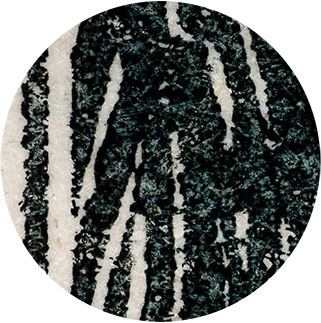

Giclée prints are a fairly recent innovation, and their longevity has been questioned as with all printing techniques, the quality of the inks can vary widely, and while laboratory simulations of aging can give some indication of expected life, good care and hanging of any reproduction is always important - ultra-violet light, and changing humidity and temperature can cause premature ageing. The precision of the printing and the depth of color range make this type of printing attractive for many types of original - watercolor, oil or acrylic. Technically, a giclée printer can produce an apparent resolution of several thousand dots per inch on the selected substrate without the use of screens, which is higher than a tradional lithographic print, and has a wider color gamut than serigraphy. It should also be noted that the quality of the photography and scanning of the original painting and/or any "computer enhancement" of an image obviously affects the quality of reproduction. Other manufacturers have entered the arena (Roland, Colorspan, Hewlett-Packard, Epson etc) with more affordable products, however standards may vary, particularly with the archival quality of inks, the number of print heads and inks used, drum speed, etc. Iris was the first manufacturer of these high quality printing machines (and are still among the industry leaders) which can cost upwards of $45,000. However, the direct comparison stops there, as the machines and the inks (or paints) used are not the same, and while a giclée can be printed on the same paper as an offset print, it is more often on canvas, or on high quality or hand-made art paper. Giclée printing (from the French gicler, to spray or squirt) is a technical, computer controlled reproduction method somewhat comparable to ink-jet printing - the same process used by the ink-jet printers for home and office computers. Has a known number of impressions, usually fewer then 200, that are numbered and signed. A set of identical prints, sometimes numbered and signed, pulled by, or under the supervision of the artist. The inked image is transferred from plate to paper and is simultaneously embossed. A print made from an image built up with glue and sometimes other materials. The impression made by the artist's or the printer's seal on the paper.Ĭollograph. The plates are then burnished to hold less ink creating tonal areas, smooth areas printing white.Ĭhop. Mezzotint, the plate is finely textured to print black when inked. Later the plates were printed using coloured inks either with more than one colour on a single plate or using several plates, one for each colour. Steel engraving, the steel plate is incised with cuts which when inked print as lines.Īquatint, a form of etching using fine particles to create areas of tone.In good quality early 19th century books these were originally hand coloured. These were the original early illustrations and date from 1460. Woodcut or wood engraving, where blocks of wood, traditionally from the box tree are engraved and printed. The most commonly used book print techniques are:

By hand colouring and framing these prints, decorative images are created and these are often sold under subject categories.īook illustration is an interesting area in its own right and reflects innovations in print technology. Many antique prints started out as book illustrations, the book is disassembled to separate the illustrations from the text and sold separately in the trade they are therefore refered to as 'breakers'. After the limited edition is completed the remaining plate is usually destroyed or defaced thus ensuring the rarity of the edition. Original artists' prints are also signed and sometimes dated.
#Compare and contrast relief printing and intaglio series
To qualify as a Limited Edition, the prints must limited and the edition number written on the image, 4/75 refers to the fourth edition out of a series of 75 in practice the lower the edition number the cleaner the impression. These prints are produced by artists, either in their own studios or within a specialist printmaking workshop. One of a small group of prints set aside from an open edition for the artist's use a number of printer's proofs are sometimes also done for the printer's use. This technique is often used with line etching and other etching methods (see also sugar lift).Īrtist's Proof.

When inked these textures enable subtle tonal areas to be printed. The grains can be applied in a variety of thicknesses and the grain size varied using controlled acid strength and immersion times a wide range of textures can be created. Powdered resin is dusted onto the metal plate and acts as an acid resist. This is a form of etching which enables a wide variety of tones to be created. Intaglio including engraving, etching etcĪquatint.Formerly the Archives and Collections SocietyĪrt Print Terminology and other graphics terms.


 0 kommentar(er)
0 kommentar(er)
